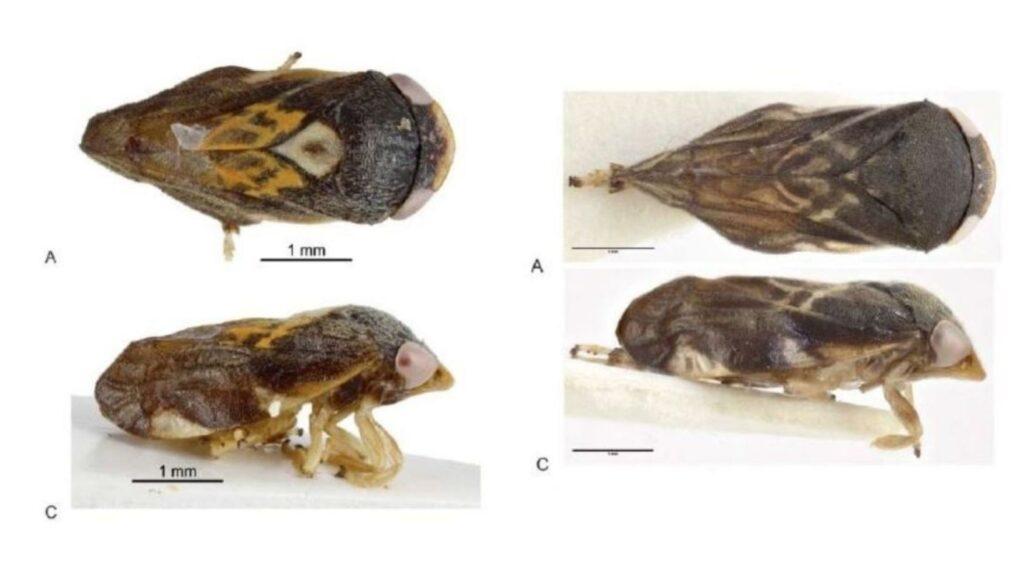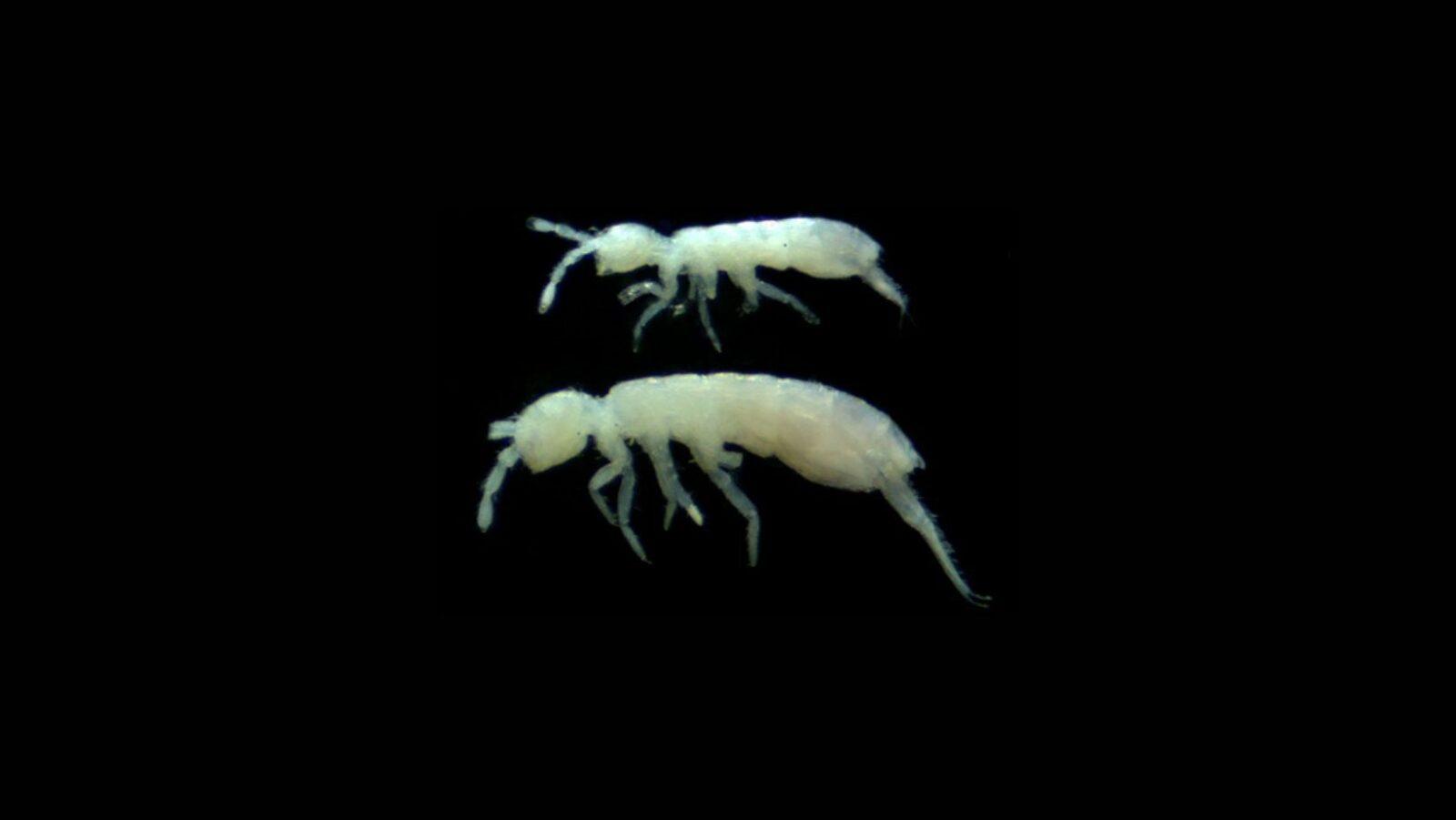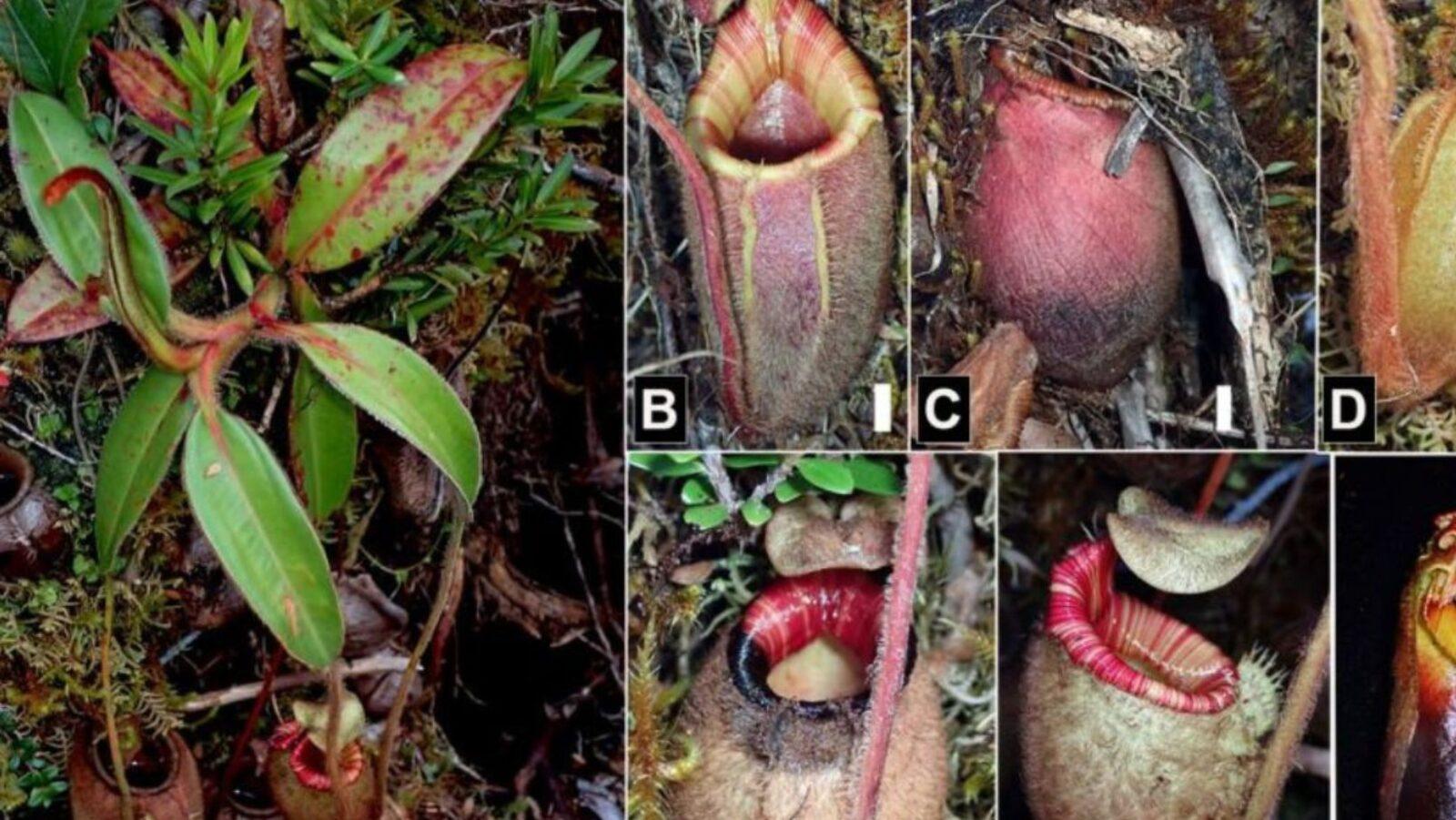
In March 2024, descriptions of two new insect species from the Philippines, as well as the proposal of a new genus, were published in Annales Zoologici.
New Genus – 𝙑𝙞𝙣𝙥𝙞𝙚𝙩𝙧𝙞
The newly named genus 𝘝𝘪𝘯𝘱𝘪𝘦𝘵𝘳𝘪 belongs to the hemipteran family Cercopidae, which includes the insects we call froghoppers or spittlebugs. 𝘝𝘪𝘯𝘱𝘪𝘦𝘵𝘳𝘪 species are similar in general shape and color to another Cercopidae genus, Jacobsoniella. Notably, though, the backs of 𝘝𝘪𝘯𝘱𝘪𝘦𝘵𝘳𝘪 insects feature “lightning bolts” due to the white or yellowish color patterns on their thickened forewings (tegmina). Thus, the researchers decided to name the genus after Vincent Pietri, who works in the electric power industry.
𝙑𝙞𝙣𝙥𝙞𝙚𝙩𝙧𝙞 𝙘𝙖𝙝𝙖𝙩𝙞𝙖𝙣𝙖𝙚
Distribution/habitat: Polillo Island and Luzon Island, Philippines (Type locality: Laguna, Luzon Island)
Endemic: Yes
Distinctive traits: Smaller than a pencil’s eraser, 𝘝. 𝘤𝘢𝘩𝘢𝘵𝘪𝘢𝘯𝘢𝘦 is approximately 5 mm long (including its tegmina) and 2 mm wide. It is similar in appearance to the other newly described 𝘝𝘪𝘯𝘱𝘪𝘦𝘵𝘳𝘪 species, 𝘝. 𝘺𝘢𝘱𝘢𝘦. However, 𝘝. 𝘤𝘢𝘩𝘢𝘵𝘪𝘢𝘯𝘢𝘦 sports a yellowish-white scutellum (the triangular shield on its back) with an almond-shaped black spot in the middle.
Conservation status: Unspecified
Described by: Elorde Crispolon Jr. and Adeline Soulier-Perkins
Etymology: The species was named after the first author’s former mentor, Dr. Purificacion O. Cahatian, who inspired him to become an insect taxonomist.
𝙑𝙞𝙣𝙥𝙞𝙚𝙩𝙧𝙞 𝙮𝙖𝙥𝙖𝙚
Distribution/habitat: Luzon Island and Mindanao Island, Philippines (Type locality: Mt. Apo, Mindanao Island)
Endemic: Yes
Distinctive traits: 𝘝. 𝘺𝘢𝘱𝘢𝘦 is approximately the same size as 𝘝. 𝘤𝘢𝘩𝘢𝘵𝘪𝘢𝘯𝘢𝘦. The scutellum of 𝘝. 𝘺𝘢𝘱𝘢𝘦 is black with three small, whitish spots.
Conservation status: Unspecified
Described by: Elorde Crispolon Jr. and Maxime Le Cesne
Etymology: The species was named after the authors’ hemipterist colleague Prof. Sheryl A. Yap, who was also one of the first author’s mentors.
Significance
Prior to the discovery and description of these species, the Philippines had 19 known genera of Cercopidae, with 70 species and nine subspecies; 87% of these are endemic. This recently published research — which describes another new genus (𝘗𝘩𝘢𝘯𝘵𝘢𝘨𝘮𝘢) and two new species under it (𝘗. 𝘨𝘢𝘳𝘤𝘪𝘢𝘪 and 𝘗. 𝘮𝘢𝘢𝘳𝘢𝘵𝘪) — encourages further study and exploration of the Philippines’ biodiverse islands.—MF
Reference:
Elorde Crispolon Jr., Maxime Le Cesne, and Adeline Soulier-Perkins “Description of Two New Philippine Genera Close to Jacobsoniella Melichar (Hemiptera: Cercopidae),” Annales Zoologici 74(1), 17-42, (30 March 2024). https://doi.org/10.3161/00034541ANZ2024.74.1.002
Author: Mikael Angelo Francisco
Bitten by the science writing bug, Mikael has years of writing and editorial experience under his belt. As the editor-in-chief of FlipScience, Mikael has sworn to help make science more fun and interesting for geeky readers and casual audiences alike.






